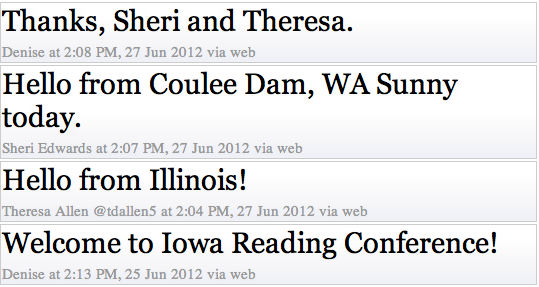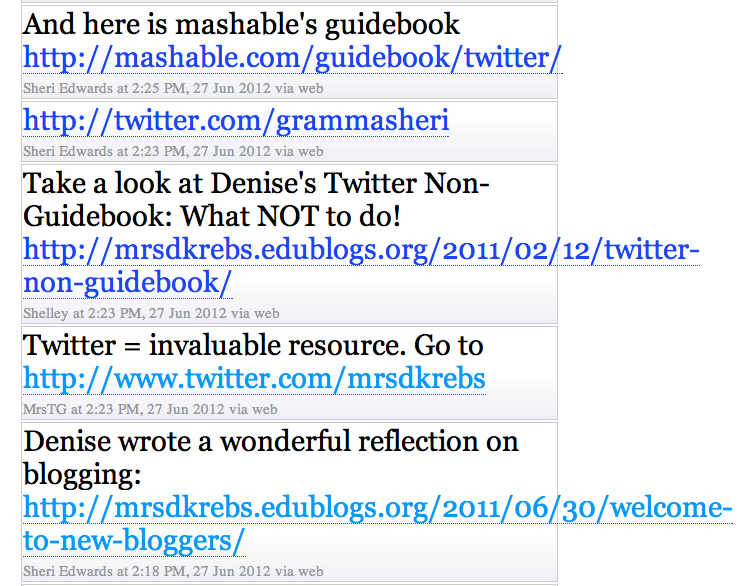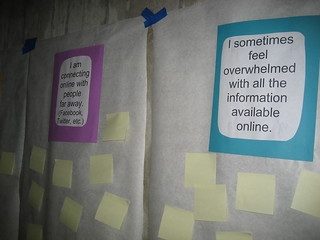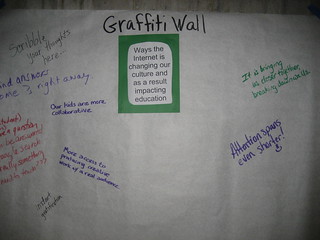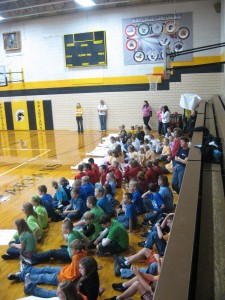As an adjunct professor for Buena Vista University, I was invited to take a one-unit course on Understanding by Design. The School of Education at BVU has a new program for undergrad teacher candidates that is heavily influenced by backward design.
The first unit in this course is an Overview of Backward Design by Wiggins and McTighe. I’m excited to finally really learn Understanding by Design.
Background
Over ten years ago, I was part of the Intel Teach to the Future program. It was an amazing professional development opportunity where I was first introduced to the idea of Essential Questions. I remember spending hours poring over the proper wording of the essential question I was to write about the rocks and minerals unit I was creating. My question was something like “What good are rocks?” I remember at the time wondering if the topic was even “essential question” worthy. It was hard to find people to talk to who “got” the essential question concept. Now, all these years later I’m ashamed to say, it’s still a fuzzy concept for me. I never fought through the then-new Understanding by Design process.
During the past two years my junior high classes have become much more student-centered. As a result, I love teaching more than ever, and it makes more sense to me! However, lately I have come to see that I swung to an extreme and need to bring back a bit more structure, perhaps more rigor and clarity in my objectives. When Barb Kruthoff invited me to take this course to help me be a better adjunct professor, I jumped at the chance. Here is the journal of my learning from the first unit of study.
Journal of Learning
I believe traditional planning does start with the why. When I became a teacher in the 1980s, the oldest version of a lesson plan I’ve ever used started with Objectives. Theoretically, we should always ask why we are teaching something. After objectives, then it went on to include anticipatory set, materials, procedure, modeling, checking for understanding, guided practice, independent practice, closure, evaluation. Any lesson planning template is pretty much some combination of these parts, and always starting with the objectives.
Now, I realize that many of the lesson plans I’ve created, written, stolen, observed do not start with the why. Oftentimes, the cool or favorite activity is chosen and the standard that fits is written in later.
However, Wiggins and McTighe have changed this. The Understanding by Design process is heavy on Stage 1, the desired results. What do we want the learners to know and be able to do? What are the big ideas, the ideas worthy of connecting with other subjects, the major themes, and so forth that we truly want them to understand? What I’m realizing is this stage has to be hammered out before the activities are chosen.
Stage 2 is about how to assess understanding. What will we do to gather evidence of learning? Finally, the learning plan is developed.

I have been guilty of the twin sins of “aimless activity” and “superficial coverage.” According to Understanding by Design, the long term goal of education is not content mastery, but the ability to use and extend content effectively, which is another way to describe understanding.
Extremely helpful in this lesson was the example of a before and after third grade pioneer unit. The before unit was full of “fun” activities that helped students experience a few activities that pioneers experienced, like churning butter and writing with a quill pen. The objectives were not clarified, and, though fun, the unit did not hold up when put to the Understanding by Design test.
In the after pioneer unit, there were big questions asked like, “Why do people move?” and “What is pioneer spirit?”
Both my junior high and my college undergraduate courses can benefit from what I learn about true understanding and how to design units with the end of understanding in sight.
As I said, I’m guilty of the twin sins. I am also guilty of doing activities without properly doing the hard work of WHY and how will I assess to know if students really understand. I’m looking forward to learning more.
ASSIGNMENT: Analyze the difference between traditional planning and ‘backward design’ by comparing and contrasting the two. Also include in your written response how the key features of ‘backward design’ can be implemented in your own classroom or that of those you supervise (university supervisors).

